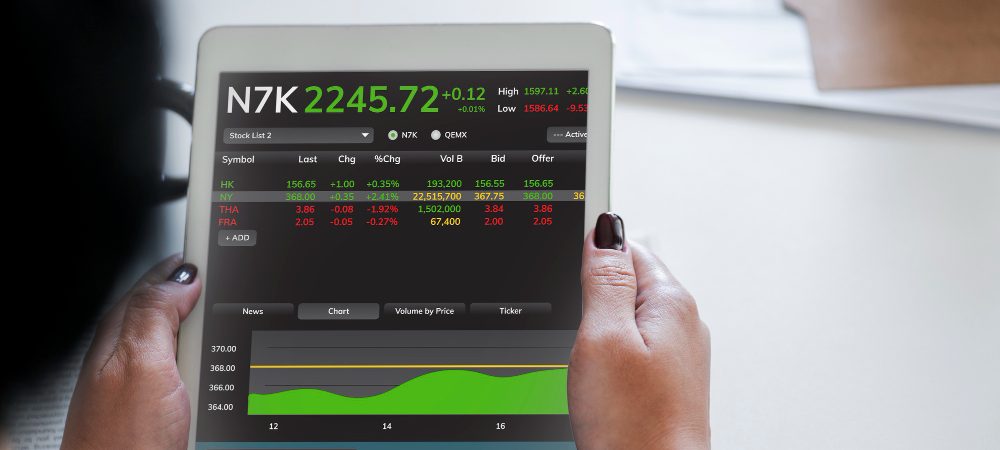More than 90 percent of retail forex traders use only price charts without getting important market intelligence that would turn their trading performance around. Volume profile in forex analysis is one of the most effective and underused tools in forex trading that shows where the institutional money flows and where the key players of the market mass take their actions.
The professional traders know that price is only half the story. Volume profile closes this gap by displaying where the large buying and selling took place at exact price levels. This sideways look at the market action gives an unparalleled look at market sentiment and future price action.
The forex market transacts more than 7.5 trillion every day, and the majority of the traders study it using old techniques. Volume profile alters this dynamics. Rather than having to speculate as to where support and resistance may establish themselves, you can now determine these levels with respect to real trading activity by the large market players.
What Is Forex Trading Volume Profile?
Instead of showing how volume changes with time as in the traditional indicators, volume profile forex analysis indicates trading activity at various price levels over a period of time. This basic contrast alters the manner in which traders perceive market behavior and make trade decisions.
In forex markets, volume profile employs tick volume as a surrogate to represent the real trading volume. Although spot forex is (centrally) exchanged data, tick volume is a very good approximation of actual trading volume and therefore volume profile analysis is very robust on currency pairs.
The indicator plots a horizontal histogram of where most of the trading has taken place at particular price levels. High-volume regions show considerable interest in the market and tend to turn into substantial support or resistance levels. On the other hand, the low-volume areas indicate a low agreement in the market and the price generally travels fast with ligature.
This strategy deciphers market structure which cannot be deciphered using price charts. The professional traders will utilize this information to know where the institutions place themselves and predict the future price responses.
Important Elements That All Forex Traders Ought to Know
Point of Control (POC)
The Point of Control is the price level that has the largest volume of trade in a particular time period. This level has been attracting price action as a magnet, and it has been pulling prices back, again and again, in trading sessions. The POC is viewed as a fair value region by professional traders in which market participants consent on price.
Once price has gone beyond the POC, it has a tendency to come back, which allows a number of trading opportunities. The POC acts as supportive movement when contacted below and resistance when contacted above.
Value Area (VA)
Value Area is the price range that includes the volume of trade that was about 70 percent. This area is the consensus of where fair value is imagined by the majority of those in the market. Value Area includes:
Value Area High (VAH): High of the 70 percent volume range.
Value Area Low (VAL): Lower value of 70 percent range of volume.
Prices that trade beyond the Value Area usually make grim directional moves, whereas prices inside this range usually consolidate.
High Volume Nodes (HVNs) and Low Volume Nodes (LVNs)
High Volume Nodes (HVNs) are price points that have a high amount of trade. These regions form good support and resistance points as they indicate where the big market players in the market accumulated positions.
Low Volume Nodes (LVNs) show price levels that have low trading. Prices tend to shoot quickly through these areas because there is no interest in the market and as such, they are ideal areas to employ breakout trading strategies.
The volume profile is a powerful tool that can be used to read the Forex to achieve success.
Interpreting volume profile involves market dynamics and behavior of participants. Begin by determining the overall shape of the distribution of volume. A balanced market condition is indicated by a bell-shaped profile and directional pressure is indicated by skewed profiles.
The behavior of the price near important volume levels will give important trading signals. As price comes in underneath a High Volume Node, be prepared to encounter possible resistance. In the event of price breaking out with great momentum, the HVN can turn into support.
The shapes of volume profile indicate market sentiment patterns. Profiles skewed to the right can be considered as evidence of bullish pressure and those skewed to the left as bearish. The knowledge of these patterns is used to forecast price behaviour in future.
The professional traders study many timeframes at once. The key support and resistance areas are determined using weekly volume profiles with daily profile adjusting the entry and exit levels. This multi time frame technique will increase the accuracy of the trade.
Volume Profile Trading Strategies that Work!
Support And Resistance Strategy
Volume profile is an expert in showing dynamic support and resistance areas that are defined by real trading behavior. If you have Mark High Volume Nodes on your charts, then observe how the price reacts at these nodes.
Once EUR/USD reaches a large volume node at 1.0850, go long 5 pips above at 1.0855. Stop losses should be placed 15 pips beneath the node at 1.0835 and profit targets placed 30 pips above the entry at 1.0885. This generates a positive risk-reward proportion of 1:2.
Volume Node Retracement Trading
In this strategy, one seeks price retreats to regions where many trades occur. Such areas can be good entry points since they are regions where large market players has once demonstrated interest.
The professional traders will wait to be confirmed before getting in to these trades. Reactions occurring at the same volume level give more confidence in the setup. Historical price response and volume analysis produce high-probability trade set ups.
Node Breakout Strategy- Low-Volume.
Low Volume Nodes provide an outstanding breakout prospective since the price travels briskly through the regions that have low trading volumes. locate LVNs at or around existing price levels and await the building of momentum.
Take positions on successful breaks on low-volume areas. High Volume Nodes The next High Volume Node should be your profit target. This method takes advantage of swift price developments by means of regions of market uncertainty.
Value Areas Range Trading
Value Areas establish areas of natural trading ranges in tightening markets. Sell VA Low and buy VA High. Have a pivot reference point on the Point of Control.
The strategy is most effective in lateral markets when price moves within known limits of volume. Look out of breakouts above or below the Value Area which could indicate changes in trends.
Examples of Real-World Application
Recent analysis on forex market shows the effectiveness of volume profile on major currency pairs. In this market volatility in 2024, EUR/USD traders who used volume profile spotted a huge volume node at 1.0800 which gave them several lucrative trading set-ups.
This degree served as a good support by means of repetitive testing, which provided long entry points. Traders who identified this volume-driven support level were able to get better outcomes relative to traders who applied classic technical analysis without volume modeling.
Another interesting example is AUD/USD. The strong rejection patterns developed heavy volume areas which provided good trading set ups. Reactions at price revisiting these levels are observed to have occurred at the volume clusters.
These live examples outline the practical usage of volume profile. The professional traders will always find the important levels through volume analysis and will wait until the price will respond at the pre-identified areas.
Implementation Guide Step-by-Step
How to Construct Volume Profile?
Use volume profile tools via websites such as TradingView. Go to Forecasting and Measurement Tools and then pick Fixed Range Volume Profile. This indicator does not measure volume based on time but on price ranges.
Change the fair value range to 35% focused analysis as compared to the default 70%. Such a smaller range brings out the areas of greatest volume concentrations.
Market structure analysis
I have plot volume profiles over appropriate time depending on your trading style. Day traders use the information of past sessions, whereas swing traders consider weekly or monthly profiles.
Mark the Point of Control, the boundaries of Value Areas and important volume nodes. Note these levels on your charts as possible areas of support and resistance.
The Trading Plans Development
Develop mechanical methods about volume profile levels. Identify comfortable entries either above or below large volume areas. Such as, when price moves above a large cluster of volume, suppose more easier movement to the next block of distribution.
Confirm with other technical tools when used in combination with volume profile analysis. Elliott Wave patterns or chart formations are said to be more confirmation when they correlate with the levels that are based on volume.
Volume Profile Gotchas to Avoid
Most traders use fixed timeframe profiles blindly without taking market context into account. Volume profiles that are flexible and concentrate on particular areas of trend are more applicable and meaningful than daily or weekly profiles which contain irrelevant volume information.
The other mistake is neglecting to pay attention to volume profile shapes and instead focusing on single levels. The entire distribution profile gives important context to read the sentiment in the market and likely future movements.
The significance of multiple confirmations is also often disregarded by the traders. The individual volume levels will need further confirmation by the price action or other technical indicators before allocating funds.
Lastly, do not use volume profile in vacuity. This indicator is most effective when used with other forms of analysis to develop detailed trading strategies as opposed to using volume information solely.
The volume profile forex analysis is a paradigm shift in the trading of currencies. Through the realization of where substantial trading has been taking place, traders get an unexampled perception into the market structure and the behavior of the participants. The very same knowledge can be directly applied to timing entries, more reliable support and resistance levels, and overall trading success.
Most profitable forex traders enhance the volume profile analysis by using good risk management techniques and various confirmation methods. This holistic methodology brings together theoretical understanding and turns it into practical trading advantage, which is the key to profitable performance in modern ever-changing currency markets.



